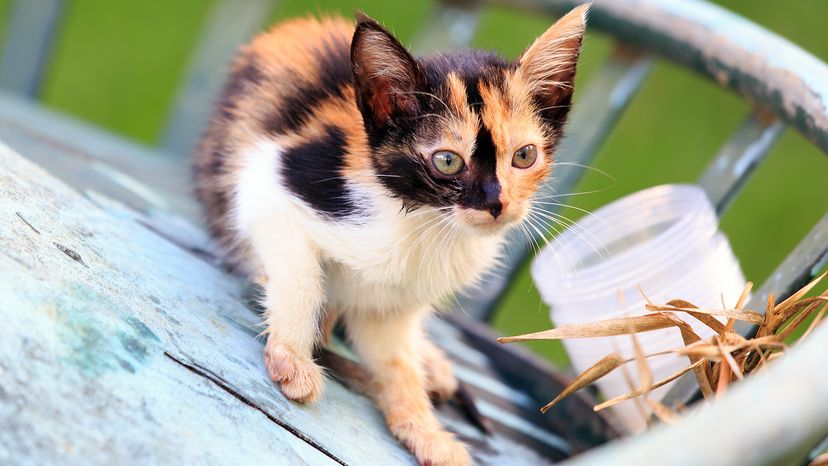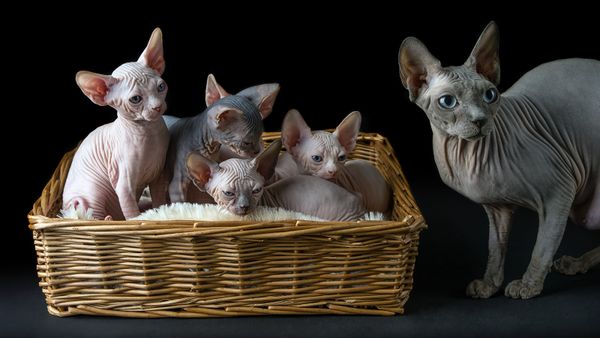Let's do a quick biology review. Eggs have one X chromosome and are contributed by the female. Sperm is contributed by the male and contains either an X or a Y chromosome. When sperm joins with the egg, the combination of XX or XY creates the gender of the cat. The sex chromosomes are referred to as the XX (female) or XY chromosomes (male). Some attributes, like coat color, are passed down in the cat's sex chromosomes, says Dr. Bruce Kornreich, associate director of the Cornell Feline Health Center at Cornell University in New York.
"Normal females are XX and normal males are XY," Kornreich says. "Because females have XX, they can receive coat input from the queens (females) and the toms (males). In other words, if one of the X chromosomes (in a female cat) carries a black gene and the other one is an orange gene, in that case you'll have this (calico) mix. But because males only get one X chromosome, it's not common for them to have this mix. They only get the coat color from the queen alone, from one parent."
Think of it this way: In order for calico to occur, one of a cat's X chromosomes has to carry a black gene and the other might carry an orange gene. If both the female chromosomes are black, then she'll be black. If they're both orange, she'll be orange. If the chromosomes are mixed, black and orange, she'll be calico.
The patches in calicos occur during the early stages of development in a complicated process called "X chromosome inactivation," which happens when genes for black fur and genes for orange fur are randomly distributed all over the fertilized egg. A black patch of fur is created when the X chromosome carrying the gene for orange fur is inactivated. Conversely, an orange patch of fur is created when the X chromosome carrying the gene for black fur is inactivated. Because of this unusual genetic component, no two calico cats are alike. The markings will never be exactly the same, even in twins.



